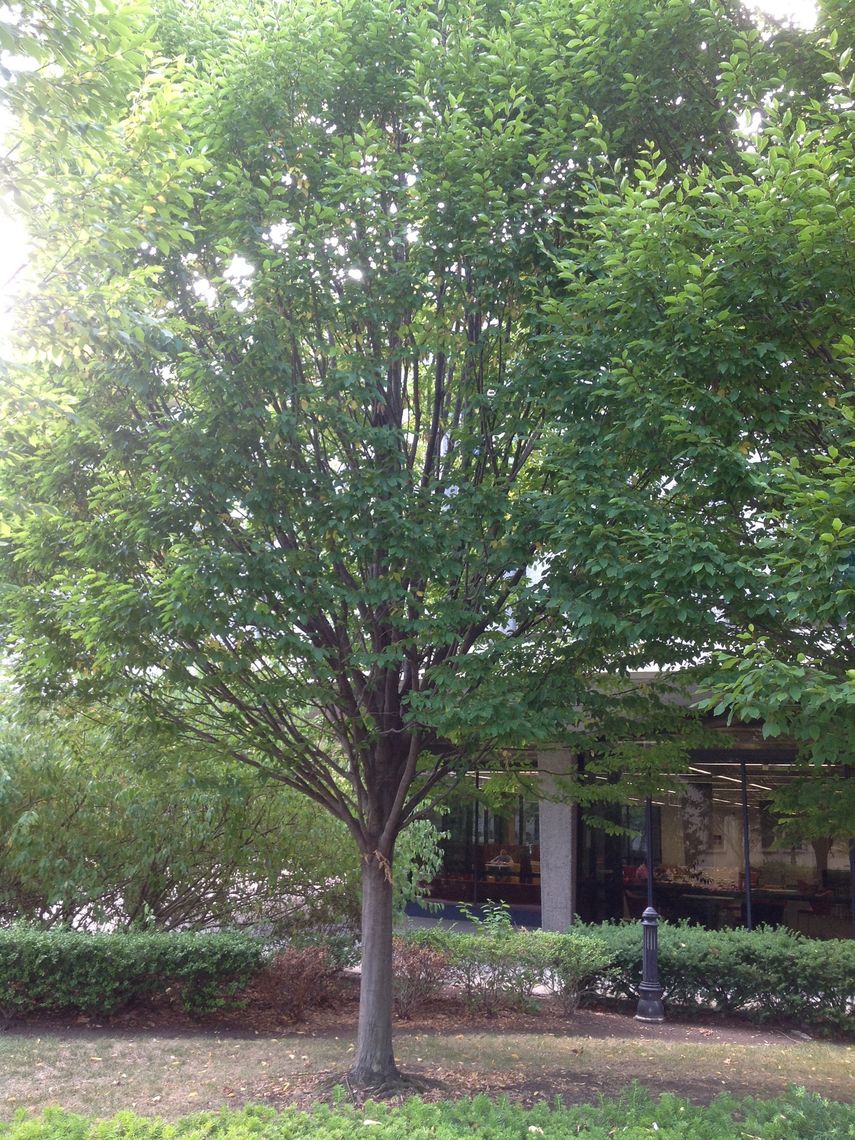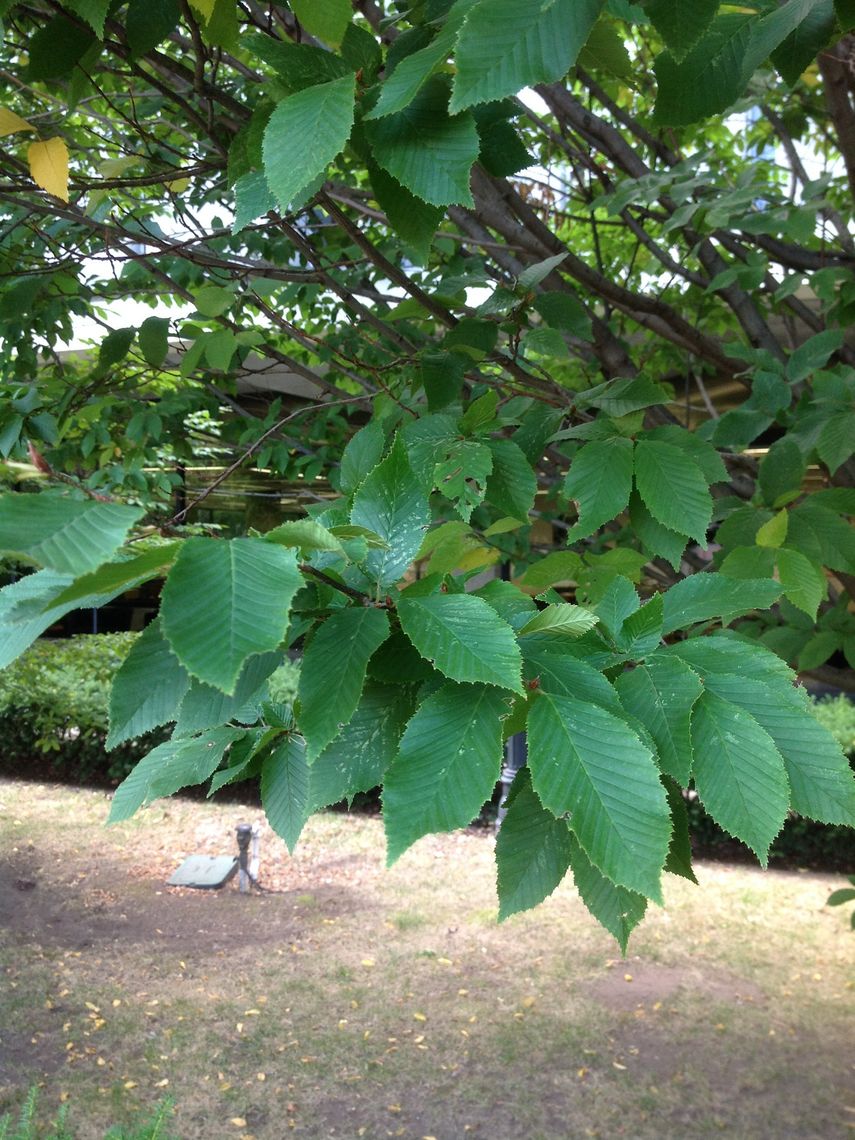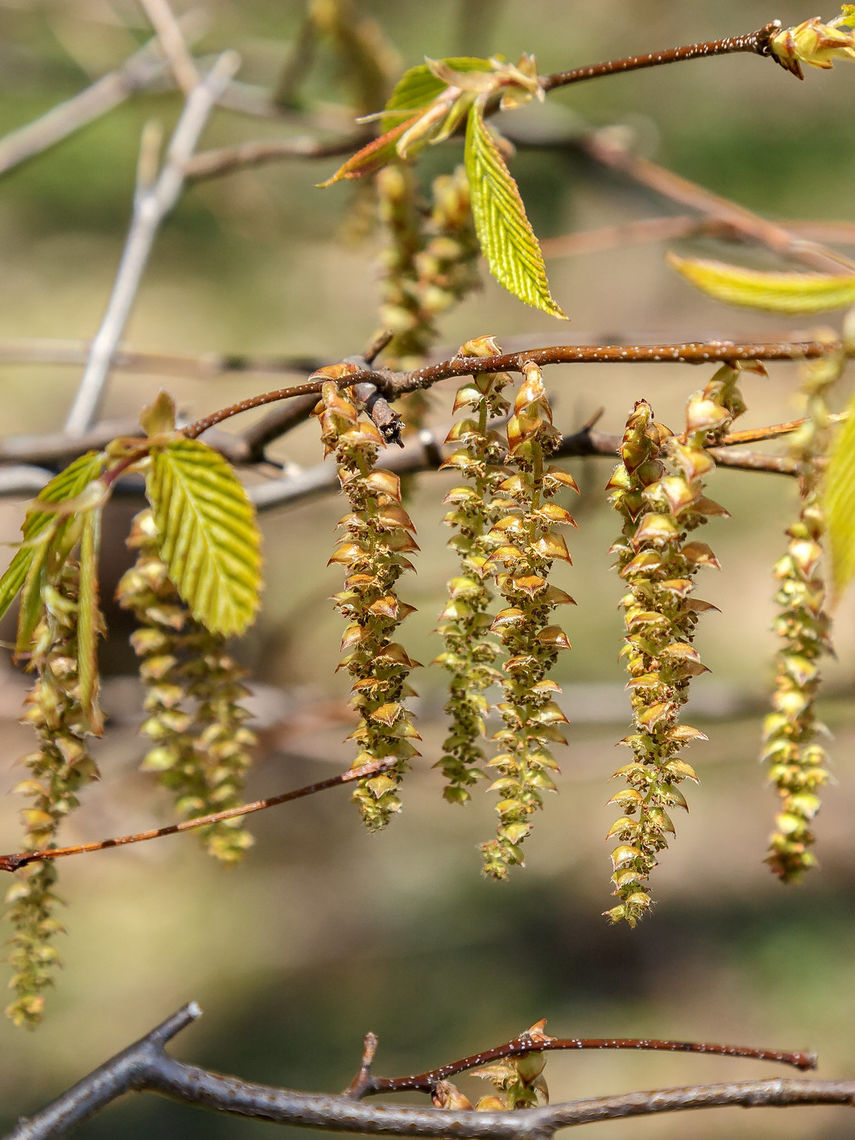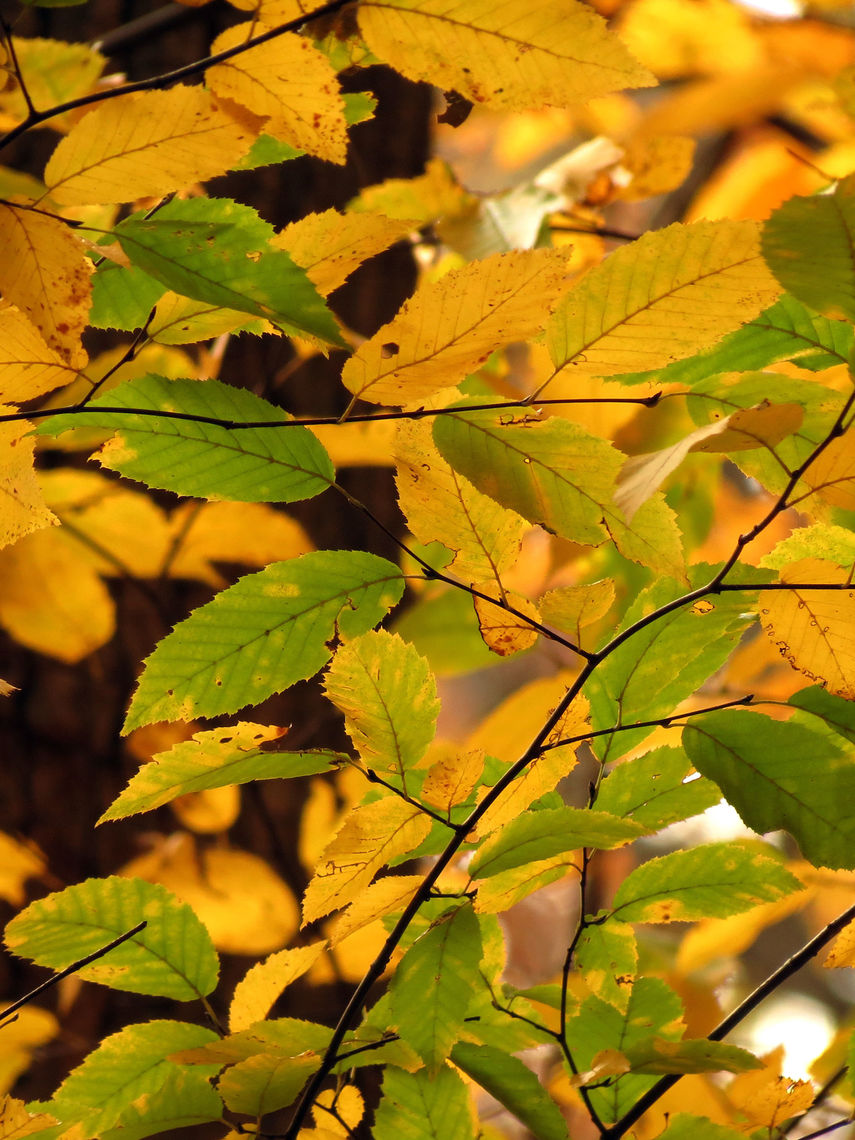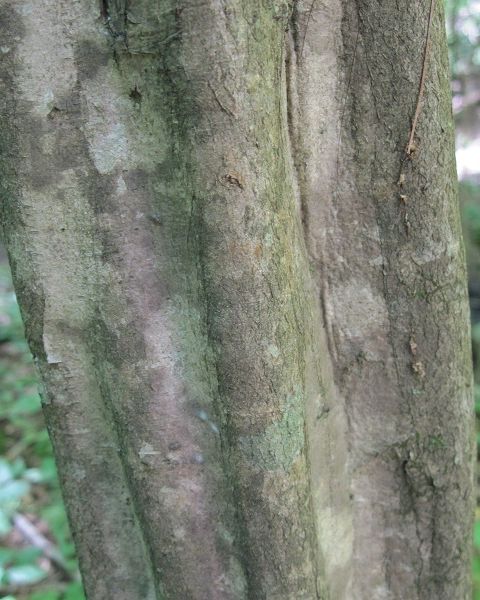American Hornbeam (Carpinus caroliniana)
The American hornbeam can be found growing along streams in moist alluvial soils in the wild or as a shade tree in residential landscapes. The tree has distinct bark that has muscle-like fluting and is therefore sometimes also called musclewood. Its leaves are deep green, teardrop shaped, and sharply toothed. This tree attracts game birds, songbirds, and small mammals.
Family: Betulaceae (Birch)
Characteristics: The 2-inch to 5½-inch-long leaves are ovate, sharply toothed, and deep green with prominent veins. In the fall, leaves turn yellow to red-purple. In the spring, before leaves emerge, flowers begin to appear as long, droopy, yellow-brown male catkins or smaller, green, upright female catkins. This species has distinct brown-black buds. Bark is steel-gray, smooth, and has distinctive muscle-like fluting. This tree is upright and spreading and has a round to flat-topped crown. It grows 20-30 feet high and wide.
Foliage: Deciduous (leaves lost seasonally)
Geographic Origin: Eastern North America (native)
Cultivation Notes: Requires low maintenance. Does best in full sun to part-shade. Prefers acidic, moist, and well-drained soils.
Number on Campus: 4
Sources: Dirr, Morton Arboretum, Missouri Botanical Garden

